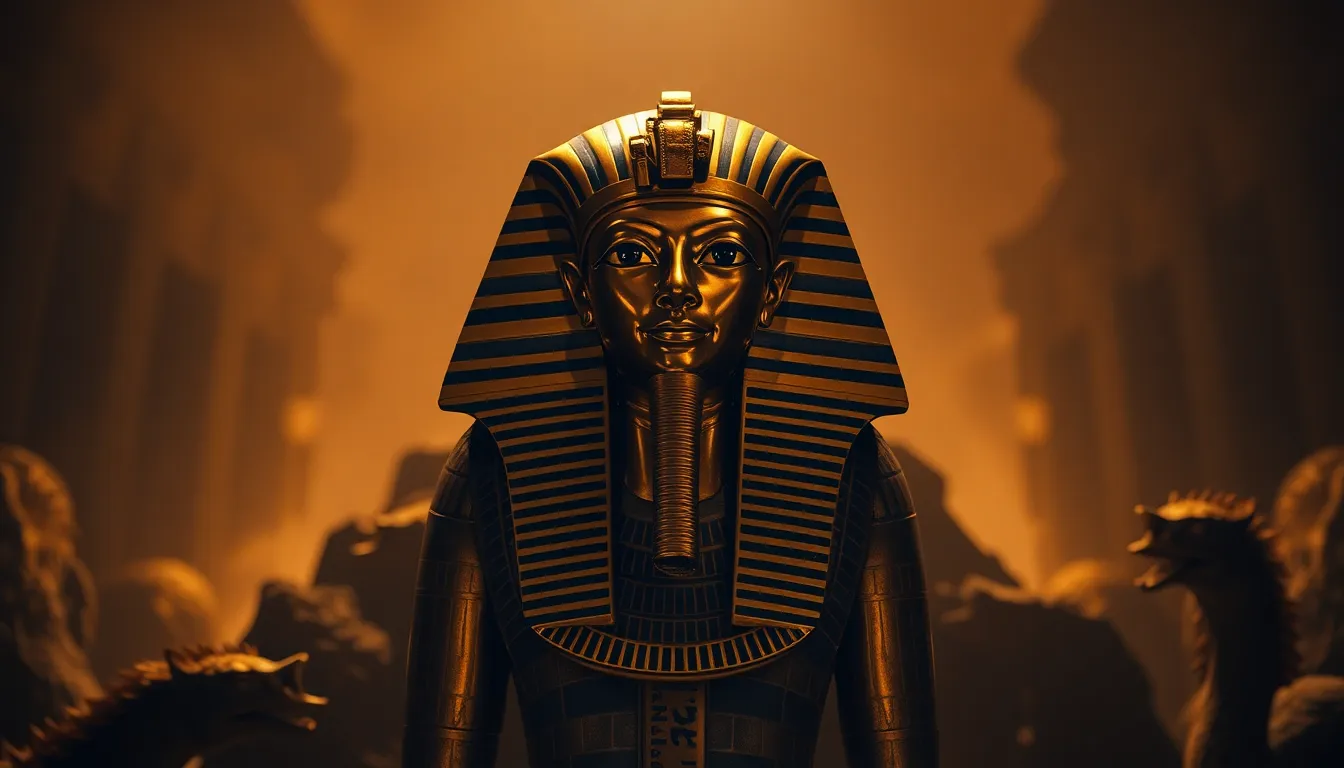The Myths of Pharaoh Tutankhamun’s Golden Artifacts
I. Introduction
Tutankhamun, often referred to as King Tut, is one of the most famous pharaohs of ancient Egypt, known for his opulent tomb and the treasures it contained. His reign during the 18th dynasty, although relatively brief, has captured the imagination of historians and the public alike. The allure of his golden artifacts, which include exquisite jewelry, ceremonial items, and a stunning golden mask, has contributed significantly to his legendary status.
This article aims to debunk several common myths surrounding Tutankhamun’s golden artifacts. By examining the historical context and the actual findings from his tomb, we hope to provide a clearer understanding of what these artifacts represent in the broader scope of ancient Egyptian culture and history.
II. Myth 1: All Artifacts Were Made of Solid Gold
One of the most persistent myths about Tutankhamun’s artifacts is that they were all made of solid gold. While gold was indeed a prominent material in the treasures found within his tomb, the reality is more nuanced.
- The composition of Tutankhamun’s artifacts: Many artifacts were crafted from a variety of materials, including bronze, wood, ivory, and semi-precious stones. Gold was often used as an embellishment rather than the sole material.
- Use of other materials and their significance: The incorporation of different materials highlighted the craftsmanship and artistry of ancient Egyptian artisans. Each material had its own significance, often tied to religious beliefs and cultural practices.
- Historical context of gold usage in ancient Egypt: Gold was a symbol of wealth and divinity in ancient Egypt, often associated with the gods and the afterlife. It was used strategically to convey status and power.
III. Myth 2: The Artifacts Were Exclusively for Burial
Another common misconception is that all of the artifacts found in Tutankhamun’s tomb were solely intended for burial. While many items were indeed placed there for his afterlife journey, their purposes extended beyond that.
- Purpose of the artifacts beyond the tomb: Some artifacts served practical purposes during Tutankhamun’s life, including ceremonial items used in rituals and daily activities.
- Evidence of their use in rituals and ceremonies: Archaeological findings indicate that certain items, such as ceremonial chariots and ritualistic tools, were utilized in religious ceremonies.
- Insights into the life and culture of ancient Egyptians: The artifacts provide a glimpse into the daily life, beliefs, and customs of ancient Egyptians, showcasing their complex society.
IV. Myth 3: The Curse of the Pharaoh’s Tomb
The so-called “Curse of the Pharaoh” is a captivating tale that suggests disastrous consequences for anyone who disturbs Tutankhamun’s tomb. This myth has been popularized through literature and film.
- Origins of the curse myth: The idea of a curse emerged after several individuals associated with the discovery of the tomb died under mysterious circumstances, leading to sensationalized reports in the media.
- Analysis of incidents linked to the curse: While some deaths have been attributed to the curse, many can be explained by natural causes, accidents, or pre-existing health conditions.
- Scientific explanations for the phenomena attributed to the curse: Modern science suggests that bacteria and mold present in the tomb could have contributed to health issues for those who entered it.
V. Myth 4: Tutankhamun Was a Weak and Ineffective Ruler
Another misconception is that Tutankhamun was a weak and ineffective ruler simply because he ascended to the throne at a young age and ruled for a short time.
- Historical context of Tutankhamun’s reign: Despite his youth, Tutankhamun’s reign was marked by significant political and religious changes, including the restoration of traditional polytheistic worship after the monotheistic reign of Akhenaten.
- Contributions to art, culture, and religion: Artifacts from his tomb reflect a rich cultural period, showcasing advancements in art and a return to traditional practices.
- Reassessment of his leadership based on artifacts: The treasures found in his tomb indicate that he was a ruler who valued tradition and sought to unify the country under established religious practices.
VI. Myth 5: All Artifacts Were Discovered in Perfect Condition
It is often assumed that the artifacts from Tutankhamun’s tomb were found in pristine condition, but this is far from the truth.
- The condition of artifacts at the time of discovery: Many artifacts were damaged or degraded due to the tomb’s conditions and the passage of time.
- Restoration efforts and their implications: Significant restoration efforts have been undertaken to preserve these artifacts, raising questions about authenticity and historical accuracy.
- The role of conservation in understanding ancient artifacts: Conservation not only helps preserve artifacts but also provides insights into ancient techniques and materials used by Egyptian artisans.
VII. Myth 6: The Artifacts Tell a Complete Story of Tutankhamun’s Life
Lastly, many believe that the artifacts found in Tutankhamun’s tomb provide a complete narrative of his life and reign. However, this is a misconception.
- Limitations of the artifacts as historical evidence: While the artifacts offer valuable insights, they represent only a fragment of Tutankhamun’s life and reign.
- The gaps in knowledge about Tutankhamun’s life: Much about his life remains shrouded in mystery due to limited historical records and conflicting accounts.
- The importance of interdisciplinary studies in Egyptology: A comprehensive understanding of Tutankhamun requires collaboration across various fields, including archaeology, history, and anthropology.
VIII. Conclusion
In summary, the myths surrounding Tutankhamun’s golden artifacts often overshadow the rich historical truths about this iconic pharaoh. From the misconceptions about the materials and purposes of the artifacts to the sensationalized tales of curses and weaknesses, it is crucial to approach the narrative with a critical lens.
The ongoing fascination with Tutankhamun and his treasures continues to inspire research and exploration into ancient Egyptian history. As new discoveries are made and technology advances, our understanding of this remarkable civilization will undoubtedly deepen. The encouragement for continued exploration and research remains vital, as each finding contributes to the intricate tapestry of Egypt’s past.




